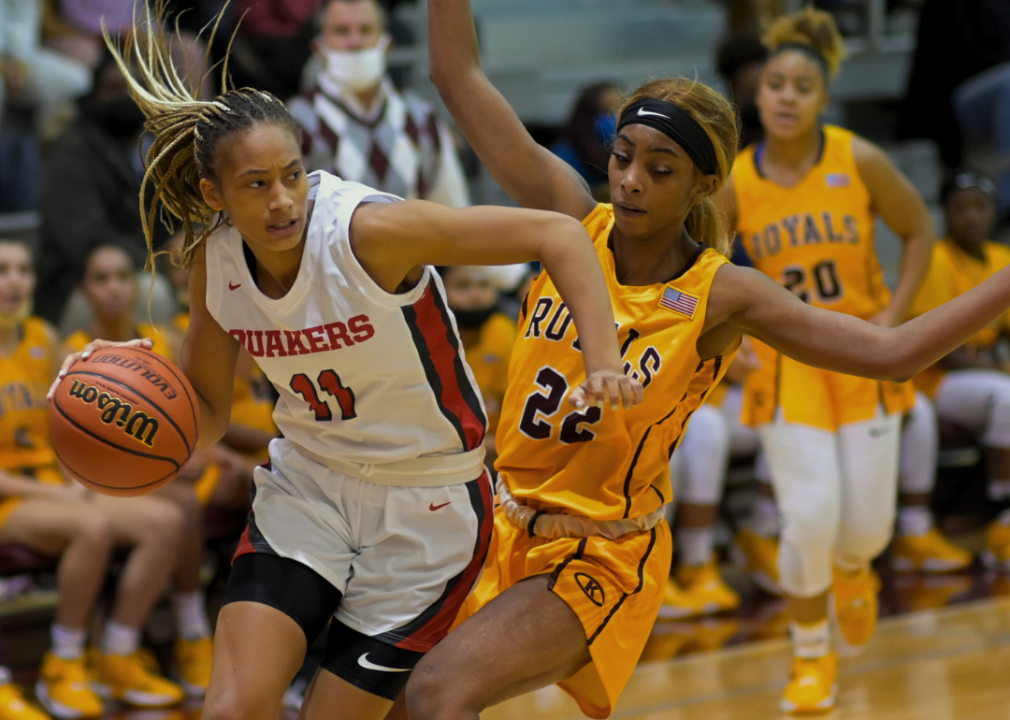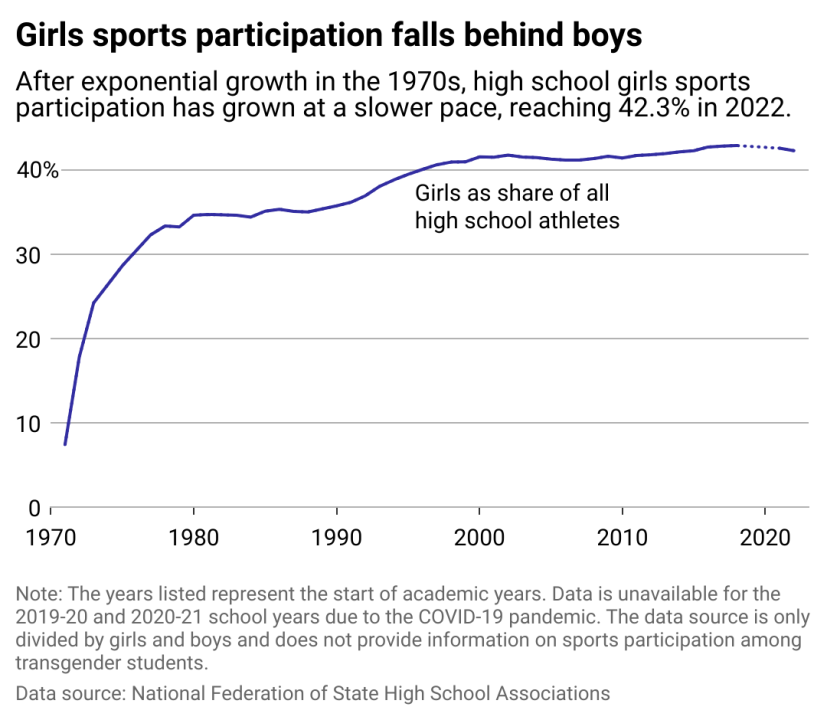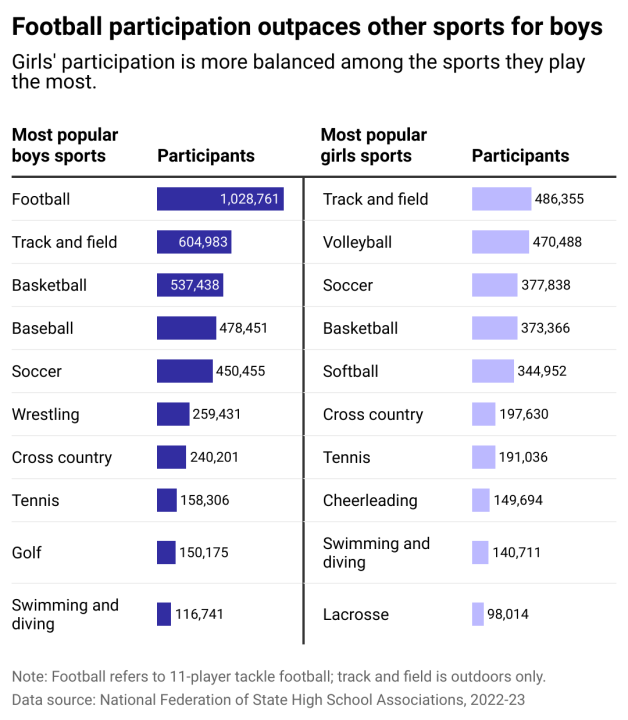Girls high school sports participation is up from a decade ago, but still lags behind boys

John McDonnell/The Washington Post // Getty Images
Girls high school sports participation is up from a decade ago, but still lags behind boys
Two basketball players on a basketball court during girls basketball tournament.
Physical education could be key to keeping students engaged and focused in the classroom. A study on middle and high school students in North Carolina found school sports participation had a significant link with academic success, positive body image, and high self-esteem. Math and science achievement also ties in with school sports participation, where problem-solving capabilities learned in athletic settings support STEM learning.
Participating in school sports is not only correlated with high achievement but also high graduation rates. In Baltimore public schools, students in the graduating class of 2019 who participated in sports all four years of high school had a graduation rate of 98.5%. Their counterparts who did not participate in sports had a graduation rate of 62.9%. The significant difference between these two groups could be due to the discipline and leadership skills school sports teach, as well as the community connections and mentorship opportunities sports bring.
Considering the proven benefits of participating in school sports, Study.com examined data from the National Federation of State High School Associations to examine how girls’ high school sports participation compares with boys’. The data source was collected with a binary breakdown of sex and gender, which excludes information on transgender participation in high school sports.
Beyond academic success, participating in school sports also opens up a wealth of higher education opportunities. Students who seek collegiate sports opportunities have greater access to scholarships. The federal law known as Title IX requires colleges to award athletic scholarships proportionally to the participation rate in sports for each gender at the university. If, for example, 65% of an institution’s athletes are male, approximately 65% of the total allocated awards should go to male athletes. But schools are not required to provide the same number of scholarships for men and women, nor to give scholarships of equal value.
With this financial landscape in mind, it is worth exploring how athletic opportunities for women compare to those for men. Even among professional leagues, women’s sports viewership and attendance lags behind men’s—there are fewer professional opportunities for women athletes.
![]()

Study.com
High school sports participation hasn’t reached parity among girls and boys
Line chart showing girls’ sports participation falls behind boys. After exponential growth in the 1970s, high school girls’ sports participation has grown at a slower pace, reaching 42.3% in 2022.
After the passage of Title IX in 1972, girls sports participation skyrocketed. But that growth started to plateau around 2000. Five decades after Title IX, the National Federation of State High School Associations reports there are still 1.3 million fewer school sports participation opportunities for girls than for boys.
The federation recommends ensuring schools take equity measures to increase girls’ participation in school sports. Specifically, it suggests all sports in a school get equal publicity, support, and announcements. Schools are encouraged to perform a Title IX self-audit, create a gender equity committee, and ensure that coaching personnel receive training to empower their teams’ athletes.

Study.com
The most popular sports
Data table showing football participation outpaces other sports for boys. The most popular sports for high school girls have less dramatic variation in participation statistics.
While football dominates male athletics, girls’ participation is much more even and varied across different sports. NFHS recommends schools offer a wide range of sports for girls to choose from and consider offering sports that the state’s athletic association may not currently sanction.
Another barrier to girls’ participation in school sports may be the material opportunities available to them. Women’s Sports Foundation reports that many girls do not have access to the same quality athletic facilities that boys enjoy.
Given the lower levels of female participation in school sports, schools must allocate resources to quality coaching, equipment, and facilities for their female students. Doing so will improve academic results and contribute to teaching and coaching confident, empowered girls and women.
Story editing by Jeff Inglis. Copy editing by Kristen Wegrzyn.
This story originally appeared on Study.com and was produced and
distributed in partnership with Stacker Studio.